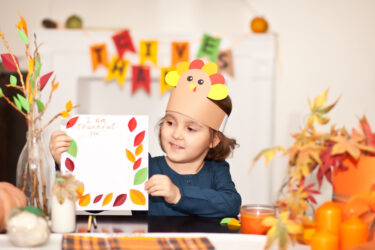It’s one of the biggest topics that raises concerns for moms and dads — is my baby’s poop normal? In fact, it’s the number one worry parents have, according to Nick DeBlasio, M.D., medical director of the Pediatric Primary Care Center at Cincinnati Children’s Hospital Medical Center. Of course, whenever something strange is “coming out,” you quickly text a friend or call your doctor worried about it.
“It [baby’s stool] will start with a tarry stools for the first few days, and after that you just kind of transition into that yellow-y, seedy stool,” says DeBlasio. “And the yellow, seedy stools will stay around for the next few weeks or couple months or so. And the next really big change you’ll begin to see is around four to six months when your baby
starts to eat solid foods.”
It’s all completely normal and nothing to worry about. But every baby eats differently — whether breastfed or formula fed — which means they will all “stool” differently, too. In the first few weeks of Baby’s life, he should be producing eight to 12 dirty diapers a day, more often for breastfed babies. As your little one grows and transitions to solid food, you will notice less “watery” and more “solid ” — all completely normal.
Baby’s Constipation and Health
A day or two goes by, or even five or more, and you haven’t changed one stooly diaper. That’s not right is it? In general, babies have weak belly muscles, DeBlasio says. If you notice your baby is having a difficult time passing stool through, there’s not much you can do other than be patient.
DeBlasio reassures parents to not get too worked up on the amount of time it takes for stool to present itself, but DO pay attention to what it looks like when it comes out.
“The main thing I look for is that the stool is not hard,” says DeBlasio. “It doesn’t matter if it’s hard to pass, I just worry if the stool itself is hard.”
So think about resting on your back and trying to go to the bathroom — difficult, right? Naturally, there will be times when Baby’s stool is taking longer to pass through than is typical, and that’s OK. It’s the consistency and color that really matters, DeBlasio says. If your baby does seem to be constipated, DeBlasio suggests giving him one ounce of prune juice once or twice a day.
“The other thing that people really focus on is the color,” says DeBlasio. “The only thing I worry about with the color is if it is black, white or red. Other than that, any color stool is really fine.”
If you DO notice your baby’s stool is red, black or white, give a call to your doctor.
Your Baby’s Digestion
Before wringing your hands about constipation or serving prune juice, take a reality check and call your pediatrician to put your mind at ease.
“A baby’s belly is about the size of a fist,” says DeBlasio.
A baby fist, that is. Realize that what goes in must come out again and relax. In general, a newborn should be eating about every two to three hours, more often for breastfed babies, DeBlasio says. As a rule of thumb, your baby is unique, so don’t compare the amount they are eating to anyone else’s babe. There is no magic number — as long as your little one is healthy and gaining good weight, you are doing the right thing.
“Every kid is different, every kid has a different eating pattern, every kid has a different stooling pattern, and you really need to talk to your pediatrician if you have specific concerns about your child,” he says.





